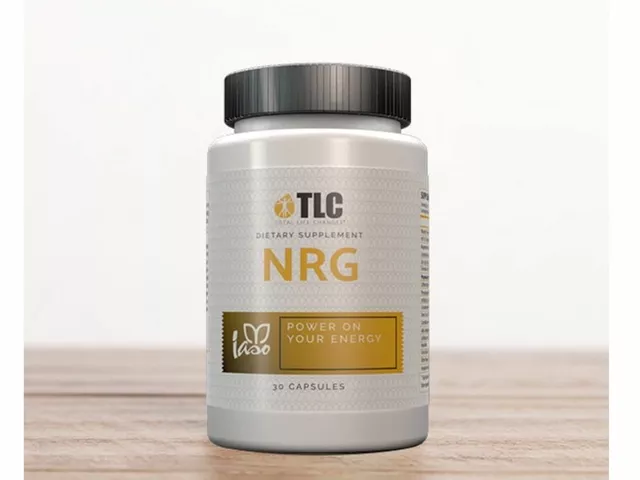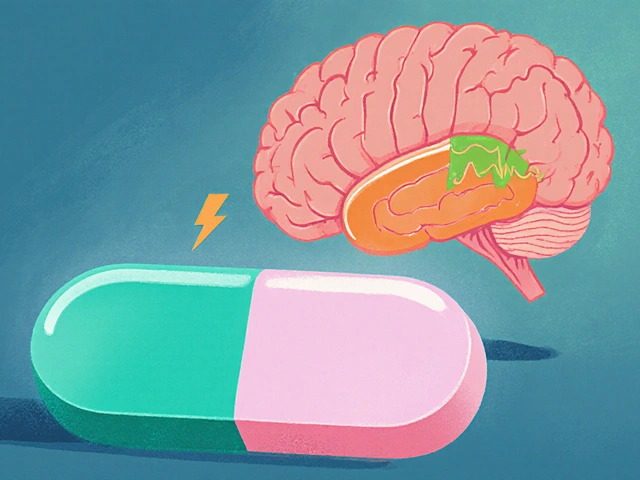TL;DR
- Ethinylestradiol BP is a lab-standard name for the synthetic estrogen in many birth-control pills; it’s not the usual estrogen for HRT.
- Modern guidelines (NICE, NAMS, Endocrine Society) prefer 17β‑estradiol-especially transdermal-because it has a lower blood-clot risk than ethinylestradiol.
- Ethinylestradiol can appear in some legacy HRT products and perimenopausal contraception, but it’s rarely the right first choice for menopause HRT or gender-affirming care.
- Rule of thumb: if you need HRT, think estradiol; if you need both symptom relief and contraception pre‑50, a combined pill can help temporarily, but plan a switch.
- Safer path in 2025: estradiol patch/gel + a body‑identical progesterone if you have a uterus; review VTE/migraine risks and start low, go slow.
What Ethinylestradiol BP actually is-and why it differs from estradiol
The “BP” in ethinylestradiol BP means British Pharmacopoeia. It’s a quality standard, not a brand or a special formula. In real life, ethinylestradiol (EE) is the synthetic estrogen used in many combined oral contraceptives. It’s potent, stable, and designed to survive first‑pass metabolism in the liver. That same build makes it great for contraception-but less ideal for long‑term hormone replacement.
HRT aims to replace what the body used to make, in a way that eases symptoms and limits long‑term risks. That’s why the modern go‑to is 17β‑estradiol-the same estrogen your ovaries made-with delivery routes (patch, gel, spray, or tablets) that let you customize dose and side‑effect profile.
Three practical differences matter for safety and comfort:
- Hepatic load: Oral ethinylestradiol hits the liver hard. It upregulates clotting factors, increases SHBG, and can nudge triglycerides and blood pressure. Oral estradiol does some of this; ethinylestradiol does more.
- VTE risk: Estrogen type and route matter. Transdermal estradiol has a lower venous thromboembolism (VTE) risk than oral estrogen. Ethinylestradiol-built for potency-carries higher VTE risk, especially when taken orally.
- Physiology: Estradiol is bioidentical. Ethinylestradiol isn’t. Your tissues and the liver respond differently, which shows up in side effects and lab values.
These aren’t nit‑picky pharm facts; they shape day‑to‑day decisions. If you’re trying to sleep better, stop hot flushes, protect bone, and not raise clot risk, you want the molecule and route that give you the benefits with the least collateral noise. That usually points away from ethinylestradiol in HRT.
What do the big guidelines say? NICE (UK) recommends estradiol for menopause HRT and notes the lower clot risk with transdermal routes. The North American Menopause Society (NAMS) echoes this, citing better VTE profiles with transdermal estradiol. The Endocrine Society and WPATH advise against ethinylestradiol in gender‑affirming hormone therapy because of thrombotic risk. These are not fringe takes-they’re mainstream, patient‑first positions.
Where ethinylestradiol fits (and where it doesn’t) in HRT in 2025
So does ethinylestradiol have any role at all in HRT? Short answer: limited, and shrinking.
Where it sometimes appears:
- Legacy low‑dose HRT tablets: A few older products paired tiny doses of ethinylestradiol with a progestin. They can work for symptoms, but they’re now overshadowed by estradiol‑based options with better safety profiles.
- Perimenopausal contraception bridging: If you’re under 50, still need reliable contraception, and your hot flushes are loud, a combined pill containing ethinylestradiol can calm symptoms and protect against pregnancy. The UK’s Faculty of Sexual & Reproductive Healthcare supports this approach in eligible women up to 50. It’s a bridge, not a destination.
Where it doesn’t belong:
- Standard menopause HRT: Most people are better served with estradiol (patch/gel/tablet). It’s flexible, effective, and safer for clots when used transdermally.
- Gender‑affirming estrogen therapy: Professional guidelines warn off ethinylestradiol because of VTE and cardiovascular risks. 17β‑estradiol-especially transdermal-is preferred.
If you’re in New Zealand, this lines up with practice on the ground. Clinicians here lean on estradiol patches/gels and add progesterone if you have a uterus. Medsafe regulates safety; PHARMAC decisions affect what’s funded and stocked. Availability can shift, but the principle holds: use estradiol, pick your route to fit your risk profile, and keep the dose as low as needed to control symptoms.
What if you’re already on an ethinylestradiol‑containing pill in your 40s for period control and contraception-and it’s helping your hot flushes too? That’s common. A sensible plan is to stay on it if you’re a good candidate (no major risk factors) until around 50, then switch to estradiol‑based HRT. If flushes flare during the swap, your clinician can overlap or taper. It’s not a failure; it’s a normal transition.
Evidence check, plain language version:
- NICE guidance (NG23, updated) backs estradiol and highlights the lower VTE risk of transdermal routes.
- NAMS 2022 position statement: transdermal estradiol has a more favorable clot profile than oral; use the lowest effective dose; start early in the menopause window for best benefit/risk.
- Endocrine Society and WPATH SOC8: avoid ethinylestradiol in gender‑affirming care due to VTE risk.
- Observational studies in HRT show higher VTE with oral estrogen and lower with transdermal routes; ethinylestradiol carries stronger hepatic effects than estradiol.

Risks, benefits, and practical comparisons you can use
Think of this like choosing the right tool. If a patch can do the job without kicking up clotting proteins in your liver, why reach for a sledgehammer?
Quick comparisons (what you feel and what your labs might show):
- Oral ethinylestradiol (tiny doses): strong hepatic effects for a small milligram count; good for suppressing ovulation and stabilizing bleeding; higher VTE signal; may raise SHBG, triglycerides; can raise blood pressure.
- Oral estradiol: gentler on the liver than ethinylestradiol but still “first‑pass”; moderate VTE signal; convenient if you hate patches, but watch blood pressure and lipids if you’re at risk.
- Transdermal estradiol (patch/gel/spray): bypasses first‑pass liver metabolism; lowest VTE signal; flexible dosing; often best choice if you have migraines, high BMI, diabetes, or previous VTE risk.
Benefits of modern estradiol HRT (with the right dose and route):
- Fast relief of vasomotor symptoms (hot flushes, night sweats).
- Better sleep and mood stability for many.
- Bone protection; slower bone loss; lower fracture risk over time.
- Urogenital symptom relief (with or without added local vaginal estrogen).
Risks you balance (route and progestogen make a difference):
- VTE and stroke: higher with oral estrogens; lower with transdermal estradiol.
- Breast cancer: small absolute differences that depend on duration, age, and the type of progestogen. Micronized progesterone seems friendlier than older synthetic progestins.
- Blood pressure: oral estrogen can raise it; transdermal less so.
- Triglycerides and gallbladder: oral estrogens can nudge both up; transdermal less effect.
Useful heuristics (they save time in clinic and at the pharmacy counter):
- If VTE risk is on your radar (past clot, strong family history, high BMI, immobility), choose transdermal estradiol, not ethinylestradiol.
- If you have migraine with aura, avoid oral estrogen; transdermal estradiol is the safer play.
- If you still need contraception and symptom control pre‑50, a combined pill is fine short‑term; plan your switch to estradiol‑based HRT around 50.
- If you have a uterus, you need a progestogen with systemic estrogen to protect the endometrium. Micronized progesterone is often best tolerated.
- Start low, go slow. Dose is about symptom control, not hitting a lab number.
Common pitfalls (and how to dodge them):
- Confusing brand names: many birth‑control pills contain ethinylestradiol; that doesn’t make them standard HRT.
- Assuming “tiny dose” equals “tiny risk”: ethinylestradiol is potent; liver effects punch above its microgram weight.
- Stopping contraception too soon: you can ovulate late in the game; check with your clinician about timing based on age/period pattern.
- Skipping the progestogen: if you have a uterus and use systemic estrogen, you need it, or you risk endometrial hyperplasia.
Checklist: when to steer clear of ethinylestradiol
- History of VTE, thrombophilia, or strong family history of early clots.
- Migraine with aura.
- Uncontrolled hypertension or high cardiovascular risk.
- High triglycerides or gallbladder disease.
- Planning gender‑affirming estrogen therapy.
Monitoring cheat‑sheet (simple and practical):
- Blood pressure at baseline and after starting or changing oral estrogen.
- Ask about calf pain, breathlessness, chest pain (VTE red flags)-especially in the first 3-6 months or after dose changes.
- Consider lipids if oral estrogen is used and you have metabolic risk.
- Bleeding pattern: any unexpected bleeding after 3-6 months on HRT needs a review.
One more nuance: doses don’t translate neatly. A microgram of ethinylestradiol is not the same beast as a milligram of estradiol. Don’t try to “convert” by math. Think in routes and risk profiles, not raw numbers.
Choosing an HRT plan in 2025 without ethinylestradiol: a step‑by‑step playbook
The job you’re trying to do is simple: fix symptoms, protect long‑term health, and keep risk low. Here’s a clean path that works for most people.
- Map your goals and constraints
- Symptoms: hot flushes? sleep? brain fog? vaginal dryness?
- Uterus present? Then you’ll need a progestogen with systemic estrogen.
- Contraception still needed? If you’re under 50 and ovulating, decide whether to use a combined pill short‑term or a non‑estrogen method plus HRT.
- Risk flags: past clots, migraine with aura, high blood pressure, smoking, high BMI, diabetes.
- Pick the estrogen type and route
- Default: transdermal 17β‑estradiol patch or gel.
- If you prefer pills and risk is low: oral estradiol is an option; discuss pros/cons.
- Avoid ethinylestradiol for HRT unless there’s a very specific reason your clinician can justify-and a plan to monitor.
- Add the right progestogen if you have a uterus
- Micronized progesterone (body‑identical) is easy to tolerate for many; cyclic or continuous depending on bleeding preferences and stage of menopause.
- Other options: levonorgestrel intrauterine system (IUS) for endometrial protection and contraception; this pairs nicely with transdermal estradiol.
- Start low, adjust slowly
- Give each dose tweak 2-4 weeks before judging it.
- Track 2-3 symptoms (sleep, hot flushes, mood) so you can tell if you’re better.
- Build in safety checks
- Blood pressure, any VTE symptoms, bleeding pattern.
- If you’re using oral estrogen and you have cardio‑metabolic risks, check lipids after a few months.
Decision mini‑tree (plain language):
- Need symptom control and contraception under 50? Use a combined pill if you’re eligible → plan to switch to estradiol HRT by 50.
- No contraception needed or 50+? Go straight to estradiol HRT (patch/gel preferred).
- Migraine with aura or VTE risk? Transdermal estradiol + progesterone or IUS; skip oral estrogen.
- Gender‑affirming estrogen? Use estradiol (often transdermal); skip ethinylestradiol.
Local note if you’re in New Zealand: specific brands and funding move around. Medsafe looks after approval; PHARMAC decides what’s subsidized. Estradiol patches and gels are widely used here. If your pharmacy swaps brands, the active estradiol is the same-ask about dose equivalence if the patch size looks different.
Mini‑FAQ (the questions people ask in clinic):
Is ethinylestradiol BP the same as estradiol?
No. Ethinylestradiol is a synthetic estrogen built for potency and stability. Estradiol is bioidentical. They act differently in the liver and carry different risks.
Why is ethinylestradiol common in birth‑control pills but not in HRT?
Contraception needs reliable ovulation suppression and cycle control-ethinylestradiol is good at that. HRT aims to replace what you’ve lost with lower risk over years-estradiol fits that brief better, especially via the skin.
Can I just use my pill as HRT?
If you’re under 50 and need contraception, a combined pill can ease symptoms. But it isn’t the long‑term HRT most people should stay on past 50. Plan a switch to estradiol‑based HRT.
Is there ever a good reason to use ethinylestradiol in HRT?
Sometimes a legacy prescription persists or there’s a short‑term perimenopause need. But given safer estradiol options, most clinicians avoid ethinylestradiol for HRT.
What about gender‑affirming estrogen?
Professional guidelines steer clear of ethinylestradiol because of clots. Estradiol-often transdermal-is standard.
Do I need blood tests to set an HRT dose?
Usually no. Dose to symptom relief and side‑effect profile. Bloods can help in complex cases, but they’re not the main steering wheel.
What if I smoke?
Smoking plus oral estrogen raises vascular risks. Best move: quit. Until then, use transdermal estradiol if you need HRT and skip ethinylestradiol‑containing pills.
Will transdermal estradiol help my sleep and mood?
It often does, especially if hot flushes are waking you. Some people still need targeted sleep or mood support alongside HRT.
Does HRT always raise breast cancer risk?
Risk depends on age, duration, and which progestogen you use. Starting HRT before 60 or within 10 years of menopause has a favorable benefit-risk profile for many. Micronized progesterone seems to have a better breast profile than older progestins.
Credible sources behind these calls: NICE NG23 (menopause), the North American Menopause Society 2022 position statement, the Endocrine Society guideline and WPATH SOC8 (gender‑affirming care), and the Faculty of Sexual & Reproductive Healthcare for perimenopausal contraception. They all line up on the big point: use estradiol for HRT and keep ethinylestradiol in the contraception lane.
Next steps (quick, actionable):
- List your top three symptoms and any risk flags (VTE history, migraine with aura, high BP).
- Talk to your clinician about starting with a transdermal estradiol patch or gel, plus progesterone if you have a uterus.
- If you still need contraception, decide: short‑term combined pill vs IUS + estradiol. Plan a switch by 50 if using the pill.
- Set a 6-12 week review to adjust dose and check BP and bleeding pattern.
- If you’re on any ethinylestradiol‑containing product now, ask whether a move to estradiol would lower your risk without losing symptom control.
Troubleshooting by scenario:
- Hot flushes still bad after 2 weeks on a low‑dose patch: give it 2-4 weeks, then consider a small bump. Check patch adhesion and placement.
- New breast tenderness: hold dose steady for 2-3 weeks-it often settles. If not, lower the dose or change the route.
- Breakthrough bleeding on continuous HRT: common early on. If it lasts beyond 3-6 months or gets heavy, review the progestogen dose and consider an ultrasound.
- History of VTE: avoid oral estrogen and ethinylestradiol. Use transdermal estradiol; involve a specialist if needed.
- Migraine with aura: use transdermal estradiol at steady doses; avoid oral estrogens and ethinylestradiol.
- Perimenopause and contraception needed: combined pill if eligible, or IUS plus estradiol. Plan the switch by 50 or earlier if risks change.
- Gender‑affirming estrogen start: choose estradiol (often transdermal); do not use ethinylestradiol.
If there’s one line to remember, it’s this: the workhorse estrogen for HRT in 2025 is estradiol-ideally through the skin. Ethinylestradiol BP may look official on paper, but in practice, it belongs mostly in birth‑control pills, not your long‑term hormone replacement plan.




Gayatri Potdar
September 3, 2025 AT 20:28They’re hiding the real estrogen truth in the shadows, and the pharma elite won’t tell ya.
Marcella Kennedy
September 3, 2025 AT 21:20First of all, it’s wonderful that you’re digging into the nuances of hormone therapy – it can feel overwhelming, but breaking it down step by step really helps. The core message of the article is that estradiol, especially via transdermal routes, is the safest and most physiologic choice for most people needing HRT. That’s because it mimics the body’s natural hormone and sidesteps the liver‑first‑pass effect that drives clot risk. If you have a uterus, you’ll also need a progestogen, and many clinicians now favor micronized progesterone for its tolerability. For those under 50 who still require reliable contraception, a short‑term combined pill can bridge the gap, but the plan should include a timely switch to estradiol‑based therapy around the perimenopausal transition. Remember to assess your personal VTE risk factors – prior clot, strong family history, high BMI, smoking, or migraine with aura – and let that guide the route choice. Transdermal patches or gels are especially advantageous for anyone with those risk markers, because they dramatically lower the clot signal compared with oral estrogens. Oral estradiol is still an option if you’re averse to patches, but you’ll need regular monitoring of blood pressure and lipid panels. If you’re considering gender‑affirming hormone therapy, the same principles apply: estradiol is the gold standard, and ethinylestradiol should be avoided due to its pro‑thrombotic profile. In regions like New Zealand, funding and brand availability may shift, so keep an eye on local formularies – the underlying principle of “estradiol over EE” remains constant. When you start therapy, keep a symptom diary for hot flashes, sleep quality, mood, and any breast tenderness; a 2‑4 week window is usually enough to gauge the initial response before tweaking the dose. If you notice breakthrough bleeding on continuous regimens, a short course of a low‑dose progestogen can often settle things. And finally, never feel pressured to stay on a legacy EE‑containing pill beyond your early 50s; transitioning to estradiol can reduce long‑term health risks while still managing any lingering vasomotor symptoms.
Jamie Hogan
September 3, 2025 AT 22:15While the article is thorough the nuance lies in individual pharmacokinetics and the subtleties of hepatic enzyme induction that are often glossed over.
Ram Dwivedi
September 3, 2025 AT 23:10Exactly, the metabolic pathways differ dramatically and that’s why a patient‑centered approach is vital 😊
pooja shukla
September 4, 2025 AT 00:05Our local doctors keep pushing cheap EE meds because the government subsidies favour them, ignoring the real health costs for Indian women.
Poonam Mali
September 4, 2025 AT 01:00From a risk‑assessment matrix perspective, the legacy EE formulations represent a suboptimal risk‑benefit ratio, particularly given the heightened pro‑thrombotic milieu prevalent in our demographic; therefore, transitioning to bioidentical estradiol aligns with evidence‑based therapeutic algorithms.
Alan Whittaker
September 4, 2025 AT 01:55The pharma consortium is hiding data about EE’s clotting cascade activation – they want you on cheap pills, not safe HRT.
Michael Waddington
September 4, 2025 AT 02:50That’s a classic case of profit‑driven suppression of safety data, which we can see across many drug categories.
HAMZA JAAN
September 4, 2025 AT 03:45It’s crazy how often people just grab the first pill they see without looking at the long‑term picture.
April Rios
September 4, 2025 AT 04:40Indeed, the philosophical underpinning of personalized medicine dictates that we must weigh the ontological implications of hormonal modulation against the utilitarian goal of symptom relief.
byron thierry
September 4, 2025 AT 05:35From a cultural standpoint, many patients still equate any estrogen with “the same thing,” so education is key.
bob zika
September 4, 2025 AT 06:30Absolutely; providing clear, evidence‑based guidance helps demystify the distinctions between estradiol and ethinylestradiol for the layperson.
M Black
September 4, 2025 AT 07:25Let’s keep the momentum going – switch to a patch and feel the difference! 🚀
Sidney Wachira
September 4, 2025 AT 08:20Patch power indeed! The skin‑delivery system really turns the tide on clot concerns 😎
Aditya Satria
September 4, 2025 AT 09:15Great points all around – just remember to proofread your medication list for any lingering EE entries before your next appointment.
Jocelyn Hansen
September 4, 2025 AT 10:10👍 Absolutely, a quick checklist can prevent accidental continuation of higher‑risk formulas.
Joanne Myers
September 4, 2025 AT 11:05Guidelines uniformly endorse estradiol over ethinylestradiol for long‑term hormone therapy.